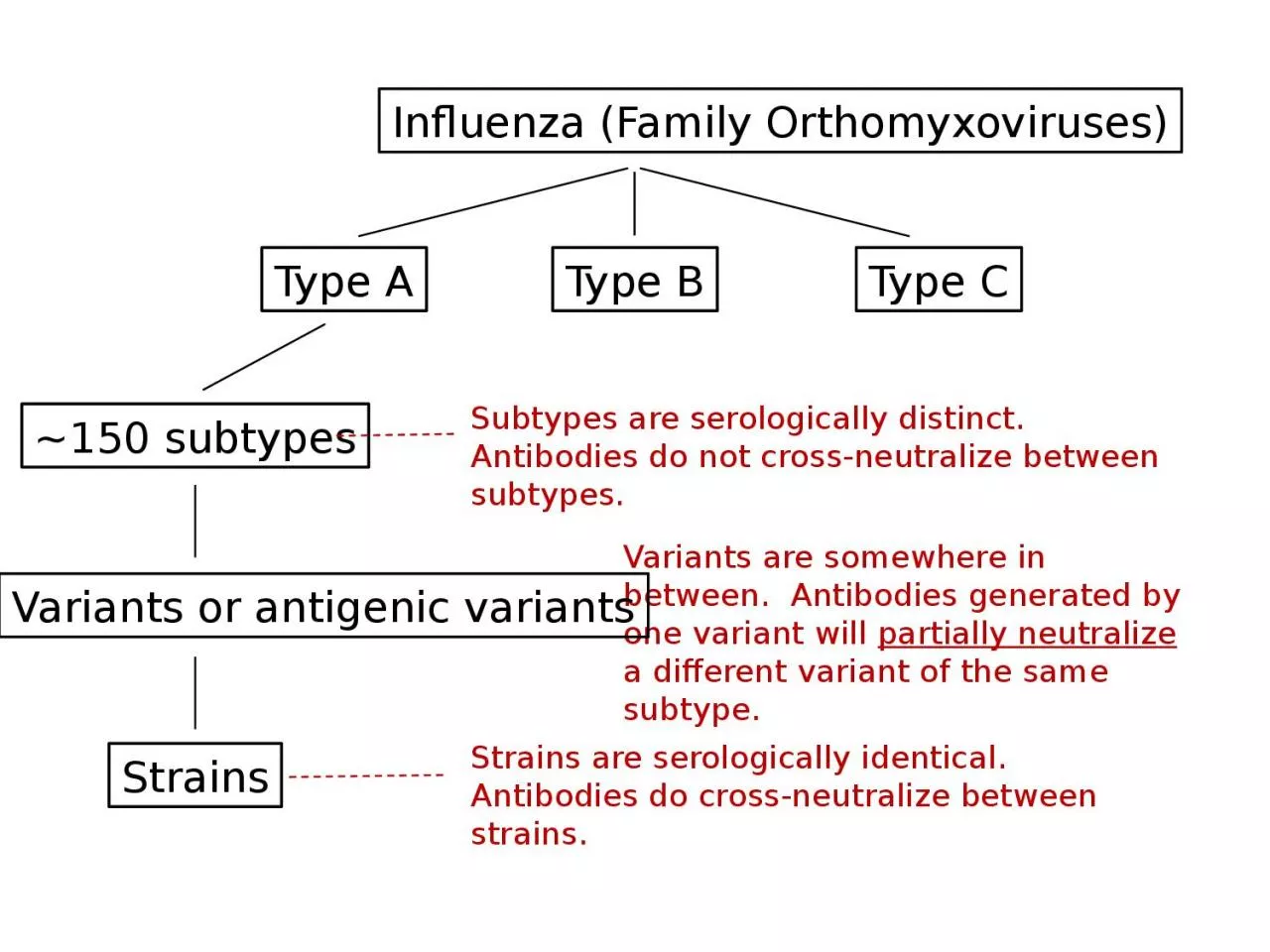

Type A Type B Type C 150 subtypes Strains Subtypes are serologically distinct Antibodies do not crossneutralize between subtypes Strains are serologically identical Antibodies do crossneutralize between strains ID: 1036519
Download Presentation The PPT/PDF document "Influenza (Family Orthomyxoviruses" is the property of its rightful owner. Permission is granted to download and print the materials on this web site for personal, non-commercial use only, and to display it on your personal computer provided you do not modify the materials and that you retain all copyright notices contained in the materials. By downloading content from our website, you accept the terms of this agreement.
1. Influenza (Family Orthomyxoviruses)Type AType BType C~150 subtypesStrainsSubtypes are serologically distinct. Antibodies do not cross-neutralize between subtypes.Strains are serologically identical. Antibodies do cross-neutralize between strains.Variants are somewhere in between. Antibodies generated by one variant will partially neutralize a different variant of the same subtype.Variants or antigenic variants
2. Influenza A genomeCodes for the hemagglutinin protein.Responsible for viral entry into host cells.Most abundant surface protein.Stimulates antibody response.The hemagglutinin is the major antigen of the virus
3. Influenza A genomeCodes for the neuraminidase protein.Responsible for viral budding (exit) from host cells.Second most abundant surface protein.Stimulates a weaker antibody response than HA.The neuraminidase is a target for antivirals.
4. Mechanisms for genetic changeMutation (Antigenic drift): Point mutations that confer a fitness advantage and spread through the host populationSeasonal fluReassortment (Antigenic shift): The process by which influenza viruses swap gene segments. This genetic exchange is possible due to the segmented nature of the viral genome and occurs when two differing influenza viruses co-infect a cell.Pandemic flu